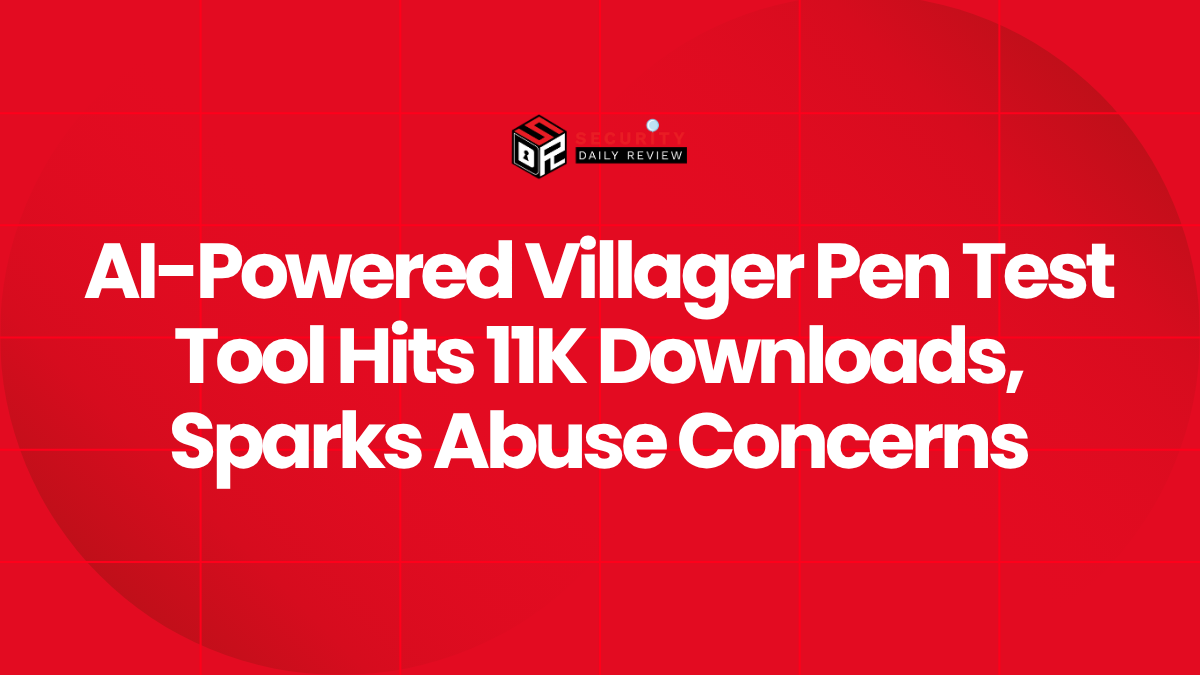An AI-driven penetration testing tool named Villager has rapidly garnered attention—both admiring and alarmed—since its public release in July 2025. Developed by the China-based firm Cyberspike, Villager has surpassed 11,000 downloads on the Python Package Index (PyPI), signaling strong demand among security professionals and hobbyists. However, as with many dual-use technologies, the tool’s accessibility and automation features are raising concerns across the cybersecurity community.
Villager Enhances Red Teaming but Lowers the Barrier to Entry
Originally designed as an AI-native penetration testing framework, Villager integrates traditional offensive tooling with state-of-the-art artificial intelligence. By combining Kali Linux toolsets, DeepSeek’s AI models, and LangChain’s orchestration capabilities, the framework transforms high-level natural language instructions into effective technical actions.
Natural Language Interface Converts Prompts Into Exploits
One of Villager’s defining features is its ability to operate based on natural language commands. Users can enter prompts such as, “Check this host for lateral movement paths,” and the underlying AI coordinate the appropriate tools, from scanning to exploitation phases. This innovation reduces the need for deep technical expertise, allowing non-experts to execute complex cyber operations with surprising efficiency.
According to multiple reports, Villager supports:
- Automated network reconnaissance
- Browser-based application testing through AI-managed interactions
- Vulnerability exploitation and local privilege escalation
- On-demand deployment of ephemeral Kali Linux containers for isolated tasks
Each container deploys with randomized Secure Shell (SSH) ports, complicating digital forensics and hindering incident responders’ ability to trace specific attack vectors.
The Comparisons to Cobalt Strike are More Than Superficial
Security researchers, particularly from the firm Straiker, predict an alarming trajectory for Villager. They draw direct parallels to Cobalt Strike, the legitimate penetration testing framework that evolved into a key resource for ransomware groups and advanced persistent threats (APTs). Villager, like Cobalt Strike before it, is showing signs of transitioning from ethical security use to tool-of-choice for cybercriminals.
Straiker analysts also highlighted that Cyberspike—the creator of Villager—was previously linked to tooling repackaged from malware like AsyncRAT. This pattern raises questions about Cyberspike’s intent and the rigor of its distribution controls around potentially dangerous software.
Automation Creates New Opportunities—and Threats
The explosive growth of Villager’s user base highlights the tool’s perceived utility, but with it comes an escalated threat landscape. Analysts widely agree that the tool’s automation:
- Enables full-spectrum cyber operations with limited user input
- Shortens timelines for reconnaissance, exploitation, and post-exploitation
- Allows attackers to scale campaigns with minimal human oversight
WebProNews reported that Villager can autonomously execute cyberattacks, maintain persistence, and perform data exfiltration—all guided by natural language objectives. These AI-powered penetration testing capabilities signal a shift in red-team tooling: power and simplicity are no longer at odds.
Public Access Raises Dual-Use Concerns for the Cybersecurity Community
Although the tool is marketed for legitimate penetration testing and ethical hacking, Villager’s public availability on PyPI makes it trivially easy to acquire and deploy. Unlike licensing frameworks or professional vetting processes used by tools like Cobalt Strike or Metasploit Pro, Villager imposes no meaningful restrictions on its use.
The concern, reported consistently across InfoSecurity Magazine, TechRadar, and BetterWorld Technology, is that threat actors can now execute sophisticated attacks without investing in technical training or custom tooling. Worse, the AI’s orchestration of on-demand Linux environments exponentially increases the complexity of forensic analysis and attribution.
“It’s a concerning evolution in AI-driven attack tooling,” one researcher from Straiker emphasized. “The public release makes advanced tactics accessible to lower-tier criminals, and detection becomes more difficult due to ephemeral infrastructure.”
A Call for Proactive Defense and Policy Adaptation
The emergence of Villager underscores a broader trend: AI penetration testing frameworks are evolving at a pace that outstrips regulation and detection technologies. As ethical hackers benefit from tools like Villager, so too do adversaries who once lacked the skills to build or operate such infrastructure.
Defenders should consider the following response measures:
- Implement enhanced monitoring for ephemeral infrastructure, especially unusual SSH activity from containerized environments.
- Refine threat detection models to account for more human-like attack sequences generated through natural language AI interfaces.
- Evaluate endpoint protection solutions against AI-generated lateral movement and privilege escalation tactics.
- Collaborate with policy-makers to drive conversations around responsible disclosure and controlled availability of highly automated dual-use tools.
Villager has firmly established itself as a disruptive force in the world of ethical hacking. Yet, like its apparent predecessor, Cobalt Strike, the question is no longer whether Villager will be abused—but how soon and how severely. For defenders, that means the time to adapt is now.









